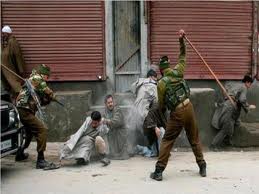
Srinagar, May 7: As many as 129 army personnel, including three dozen officers, were found guilty of human rights violations mostly in Jammu and Kashmir and Northeast in the last two decades, defence sources have said.
Following the establishment of human rights cell in 1993, the army has received more than 1,500 allegations of rights violations against its men but most of these have been found false and baseless, they said.
"Of the 1,532 allegations of rights violations, investigations revealed that 1,508 were false. Out of the 995 complaints in Jammu and Kashmir, 961 were false while only 29 out of the 485 complaints from Northeast were found correct," the sources said.
The sources said 59 personnel, including some officers, were punished in Jammu and Kashmir in the nine cases of rights violations.
"Similarly, 70 personnel were punished in Northeast after their guilt was established," the sources said.
Army has awarded compensation in 34 cases in which the complaints were found to be genuine. While compensation was paid in 15 cases in Jammu and Kashmir, 19 victims of rights violations were compensated in Northeast, they said.
The sources said if the army decides to exercise the option of court martial against its accused personnel in the Pathribal encounter case, due course of law will be followed if they are found guilty.
"Anyone found guilty of rights abuses has been punished and it should be no different in this (Pathribal) case," they said.
Last week, the Supreme Court had directed the army to decide within eight weeks whether it would exercise the option of court martial or allow its personnel, accused of staging a fake encounter at Pathribal, to be tried by a civilian court.





Comments
Add new comment